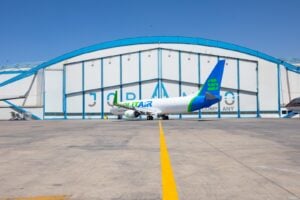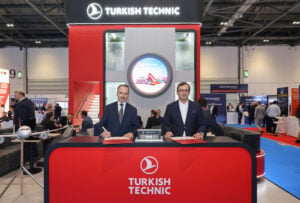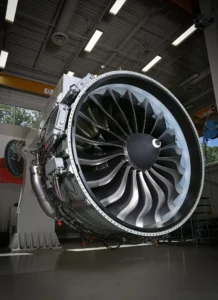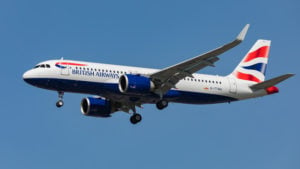Expediting the Supply of Aircraft Parts and Materials
The unexpected failure of an aircraft part usually means one thing – it becomes inoperable, and aircraft on ground (AOG) costs are the financial bane of any carrier. Consequently, there is an unavoidable sense of urgency whenever an aircraft becomes grounded through a part failure, particularly as it is likely to be many miles away from usual MRO facilities. We wanted to delve deeper into the world of these unexpected parts failures and the ways carriers and MRO set-ups are able to mitigate for such events in order to minimise unplanned AOG time, so we turned to five of the industry’s established MRO companies to get their input on the topic.
Who is Responsible for Part Availability?
To begin with, we wanted to know who, in an airline operation, is responsible for making parts available when there is an unexpected failure. Craig Skilton, VP Components at APOC Aviation advises us that: “The onus initially is on the airline’s supply chain team to give visibility around what parts are needed in those critical locations, even outside of contract situations, suppliers are generally receptive to place stock in remote warehouses. For suppliers like APOC, if there is known and repeat demand, then the cost of moving stock remotely can be offset by the customer requirements they know they will soon be servicing. Without that demand visibility, then suppliers will be more comfortable holding stock at the main hubs to support the wider customer demographic.” Chris Ricely, Manager of Asset Repairs at Setna iO has a history that is focused on engine materials for commercial platforms and sees multiple options. “One request, for one part, to guarantee an on-time delivery signals many responses in a dynamic network leading to hundreds of hands to complete the same goal, availability. My background in repair management, with primary focus on engine material for commercial platforms, truly starts when a non-serviceable asset is purchased and material returns to the market. When there is no availability of serviceable material on hand, availability must be created – send material out for repair. Initiating a repair request starts a ripple effect of many theorical questions that must be answered immediately – MRO location, reliability, and output. All information available in a database; ‘open sale’, ‘in stock’, and ‘on repair’ really holds no weight at the end of the day if the material is given no direction, instruction, or immobile. As removed material has 0% chance in becoming viable without movement and possible repairability, in many instances the airline relies completely on the repair network to fill the gaps and creates availability and demand that previously did not exist. Forecasting and anticipating customer needs while creating demand really proves the importance of the MRO network,” he says.
At VAS Aero Services Senior Vice President of Sales & Material Management Mike DeMicco immediately focuses on the need for logistics to provide the solution, commenting that: “In an AOG situation, time is critical, and the responsibility for ensuring immediate availability of spare parts falls primarily to the airline’s logistics and supply chain team. While engineering may identify the needed part, and maintenance executes the fix, it is logistics that ultimately drives the process to get the right part, to the right place, at the right time. That often requires close coordination with parts suppliers such as VAS Aero Services who offer immediate access to a broad inventory of new and USM parts.” Tony Zana Director of Sales EMEA, at Werner Aero, LLC is very much in agreement with DeMicco in terms of seeing logistics playing a lead role, but believes three other elements as perhaps more critical. “In today’s airline operations, the Materials or Logistics Control Center (procurement team) often takes the lead when it comes to AOG support. However, this is increasingly a cross effort involving Maintenance Control, Supply Chain, and third-party logistics providers like Werner Aero. With the growing integration of real-time tracking systems and predictive maintenance tools, decision-making is shifting toward data-driven collaboration between technical operations and supply chain departments. Cost, compliance, and urgency—is effectively in the driving seat,” he tells us.
Shipping a part from an airline´s maintenance hub to another location may be too time consuming. So, what other options might be available?
The location of an aircraft that is in need of a spare part is critical to deciding how best to get that part delivered in the swiftest possible time period. In many instances, despite the availability of a specific part on its premises, the MRO operative may decide that shipping direct from there may be too time consuming. So, what other options might be available? Chris Ricely sees a strong network as critical to providing a solution to a potentially costly problem, advising that: “Allocating material is never completed after the perfect purchase, or repair, is initiated – the expectation is to have multiple strategic options with the understanding of how to thrive in variances and discrepancies with ease and flexibility. Creating availability truly starts with a reliable network of multiple business structures in addition to the standard global MRO network. Setna iO is extremely successful within our own network – Setnix (MRO in AZ and UK) and Zulu (MRO in FL). Having ample material on hand in anticipation for customer needs ensures our ability to provide in stock, ready to go material. Locality plays a major factor, with volumes of stock poured at multiple sites, and headquarters in Chicago, quick deliveries with fewer obstacles is standard business practice and why Setna iO thrives.”
Meanwhile, having identified that any sourcing strategies used to be a massively time-consuming, manual process, Erkki Brakmann, CEO and Co-founder of SkySelect. Inc informs us that AI has now changed that landscape. He explains: “To mitigate risks and avoid costly delays, airlines need to evolve their sourcing strategies. Often, airlines have hundreds of approved vendors, and there is a good chance that one of them has the required part in stock. If not, the next step is to expand the search to the broader market. However, the sourcing process is typically manual, and in AOG situations, there is no time to identify all potential suppliers on the approved vendor list or those outside of it who may have the part in stock. To optimise this process, buyers often reach out to a select group of preferred suppliers and the OEM, which serves as the last line of defence. Modern technologies, such as artificial intelligence (AI), help eliminate the time constraints faced by buyers. By utilising data, AI can instantly identify the most likely approved or non-approved suppliers that can provide the needed part to address the AOG situation. It can also verify actual market availability and suggest the best option based on the AOG requirements. According to data, SkySelect Procurement AI has a success rate of over 75% in finding parts on the market during AOG situations, with an average response time of just 16 minutes. Mike DeMicco sees pooling agreements and exchange programmes as mitigating solutions to AOG location problems as he explains: “When shipping a part from an airline’s maintenance hub will delay needed repairs and increase AOG time, having an alternative source can save money and assure continuity of service. One option is to access local or regional part inventories that have been strategically positioned at key airports or partner MRO facilities. Operators can also tap into parts pooling agreements and exchange programs, allowing access to shared inventories across a network of operators. The best, most reliable and most economical option is to work with third-party supply partners like VAS who have a deep inventory of new and USM parts, a range of stocking and replacement programs, and the global logistics capabilities to expedite delivery from closer stock points to minimise aircraft downtime.”
To conclude this section, Tony Zana feels that there is no single solution, but suggests that: “Airlines and MROs now rely heavily on a mix of strategic alternatives such as: Local pooling arrangements with OEMs or third-party providers such as Werner, or consignment stocks placed at critical locations, inter-airline loans and exchanges, which can be quickly facilitated through platforms like ILS or Aeroxchange, and finally on-demand charter logistics or courier services for urgent moves.”
What preparations should airlines make to reduce the effect of AOG down times due to missing materials?
So, the next question we wanted answers to relates to what preparations airlines should make to reduce the effect of AOG down times through missing materials? Mike DeMicco sees real-time inventory visibility and a 24/7 response team as high on the list of priorities as he feels that: “To reduce the impact of AOG downtime caused by missing materials, airlines must adopt a proactive and well-coordinated approach. This starts with robust inventory planning, ensuring critical parts are stocked at strategic locations based on fleet type, failure trends, route network and maintenance histories. Real-time inventory visibility through digital systems helps track availability across hubs and partners. Establishing AOG response teams that operate 24/7 enables quick decision-making and coordination across departments. Having a strong relationship with a third-party supplier and logistics provider that offers 24/7 AOG services, such as VAS, will ensure priority support during emergencies. Pooling agreements, exchange programmes and pre-arranged leases can offer access to additional spares when internal stock is insufficient. Investing in predictive maintenance technologies can also help identify issues before they cause failures.”
It is clear that Chris Ricely is very much a believer in being proactive as opposed to reactive when it comes to AOG scenarios. “A dynamic strategy is required and expected as conducting business per status quo day to day does not create maximum potential as volume and scale of material is particularly import here. In repairs, price and TAT are not the only drivers, but more importantly ensuring that there are multiple streams of repair throughout the global MRO network, for example, of the same part. When material can ship directly to customers and knowing where your material is will create the greatest opportunity in a 24/7 worldwide market,” he tells us. Erkki Brakmann is of a like mind to Ricely in terms of the need to be proactive, while he also sees diversified sourcing practices as an additional and important element. He explains in detail: “Airlines can significantly reduce the impact of AOG downtimes caused by missing materials by making a strategic shift towards proactive material management and diversified sourcing practices such as: Vastly Expanded Supplier Network – When a part is missing for an AOG, airlines should not be stuck waiting for their usual vendors. If you have real-time access to the entire market availability (such as SkySelect), you can instantly tap into a much wider pool and also minimize future delays. Real-time Comparisons and Visibility – Parts procurement technologies allow airlines to compare vendors in real-time on critical factors, including price, availability, location, and lead time. This is critical for AOGs, as the fastest delivery from the nearest available source is often more crucial than the lowest price. This direct comparison capability drastically reduces the time spent on manual quote gathering and evaluation. Improving Planning with Insights on Market Availability – The availability of parts in the market varies constantly. Understanding which parts are in stock or readily available, and which are becoming scarce can help adjust inventory levels, preventing overstocking or stockouts.”
Tony Zana is quite succinct in his response to the question as he sees four key areas that airlines should invest in to help mitigate the problem of AOG times owing to failed parts, advising that: “Preparation starts with strong forecasting and data analysis/ In my opinion airlines should invest in:
• Predictive maintenance systems to anticipate failures.
• Strategically located forward-stocking hubs near high-traffic routes.
• Reliable spare parts supplier or pooling access.
• Robust AOG response protocols that integrate logistics, customs clearance, and supplier activation in one playbook.”
What options are available for the sourcing of parts in the optimum location?
It is clear that effective part sourcing is paramount for mitigating AOG incidents. So, this question relates to available options for the sourcing of parts in the optimum location? Chris Ricely at Setna iO quotes a realtor’s or estate agent’s response to the question: What is the most important aspect of any property? He explains: “Location, location, location! In real estate, investing in location has the same pay off as it does in the parts network. Committing material to multiple MROs globally creates flexibility as investing resources to new locations provides to a business’s long term. Outside of repair capabilities and certifications, there are many logistical variables to consider: country of origin/manufacture code, size of shipment, and import/export, and again, having a dynamic stream globally is the only solution. At the end of the day a part will sell to its end user based on need, however, fulfilling all demands to mitigate each variable is the show behind scenes. Setna iO has compressed these steps though strategic location planning, investing, and development. Making daily decisions while planning for tomorrow is second nature when placing emphasis on location.” Werner Aero’s Tony Zana sees two key options to use here, commenting that: “Digital sourcing tools are now central to finding the best location quickly. Airlines and MROs use platforms like: PartsBase, ILS, or Aviall to locate parts globally in real time. Partnerships with spare parts supplier and aftermarket asset management companies who maintain forward-deployed inventory in key regions also offer a competitive advantage in sourcing.”
Erkki Brakmann at SkySelect adopts a very pragmatic and uncomplicated approach to the challenge as he tells us that “A critical shift involves leveraging advanced procurement platforms that provide real-time access to a diversified global supplier network. These systems enable airlines and MROs to identify the right suppliers and instantly determine actual market availability. By allowing the instant comparison of thousands of potential sources based on crucial factors such as price, availability, location, and lead time, they help to solve AOG faster.” Over at VAS Aero Systems, Mike DeMicco comes up with several useful ideas as he suggests that: “To source a part in the best location, airlines can leverage several options, starting with their own internal inventory control system, which should provide a real-time view of parts availability across all locations, enabling efficient allocation. Airlines can also use global parts pooling networks, allowing access to shared inventories among partner airlines and MROs. The best solution is a third-party logistics provider and spare parts supplier like VAS, that has global warehousing capabilities and can locate and expedite parts virtually to and from anywhere.”
What is the best strategy to reduce the down time of an AOG related to high-failure-rate components?
Finally, we wanted to focus on high-failure-rate components and what MRO operators were the best strategies to adopt to reduce AOG down time in relation to these parts. At APOC Aviation, Craig Skilton places main focus on analytics, as he explains: “We’re entering a time where technology, especially analytical-orientated solutions around predictive maintenance, can help mitigate the risk around high-failure-rate components before they lead to AOG situations. Rather than simply having awareness of high-failure-rate components, those airlines, MROs and parts suppliers like APOC, that effectively leverage modern technology can benefit through detailed trend analysis and statistical models that correlate failure events. Those inputs can be translated into fully optimised stock levels, ensuring that airlines maintain the right stock based on actual usage and predicted failures. The output of which, can be provided to suppliers ahead of time, enabling the sourcing event to be focused on finding the best price, rather than price being pushed down the priority list when an AOG comes along.”
Chris Ricely feels that understanding the nature of specific material places a human factor to creating organic solutions for high failure rate parts. Accepting that all orders continue to be deemed non-serviceable is the same as having as removed material on hand with no action. He then goes on to explain that: “Communicating and addressing these concerns creates new avenues and solutions. There is a true translation of information that AI cannot take and solve when gathering information from a customer service representative that was translated down from an engineer. In repairs, non-serviceable is non-negotiable. Is there a DER, extended repair, EA/DR that can address the non-conformance? High failure rate material has additional metrics and variances to account for, and all strategies must be involved to achieve any potential yield. Each new strategy evolves the standards of acceptance in the market, as a part is deemed serviceable when certified when all solutions have been exhausted.”
Mike DeMicco feels that reducing AOG downtime caused by high-failure-rate components requires a data-driven strategy, in particular, identifying failure-prone components through reliability analysis and maintenance records. He suggests that one needs to: “Implement predictive maintenance tools to monitor component health and address issues before failures occur. Ensure adequate replacement stock levels of these parts are maintained at key operational locations. Engage in quick-turn repair agreements with MROs and maintain exchange programs for fast part replacements. Participate in exchange programs, pooling arrangements and develop strong supplier relationships with partners such as VAS to ensure faster access to critical parts. Integrate real-time inventory tracking systems to quickly locate and mobilise parts across the network, and, lastly, regularly review failure data to adjust stocking strategies. Use the data to mitigate the impact of high-failure-rate components.”
For Tony Zana, pre-positioning and data prioritisation make up the most effective strategy to help reduce down time related to high-failure-rate components, which includes three elements: “Identifying high-failure-rate components through reliability analysis; stocking critical parts at line stations or regional hubs where failure likelihood is highest, and partnering with PBH (Power by the Hour) providers and strong use of aftermarket suppliers” He then concludes that: “This proactive, intelligence-led approach significantly compresses AOG timelines.”

































